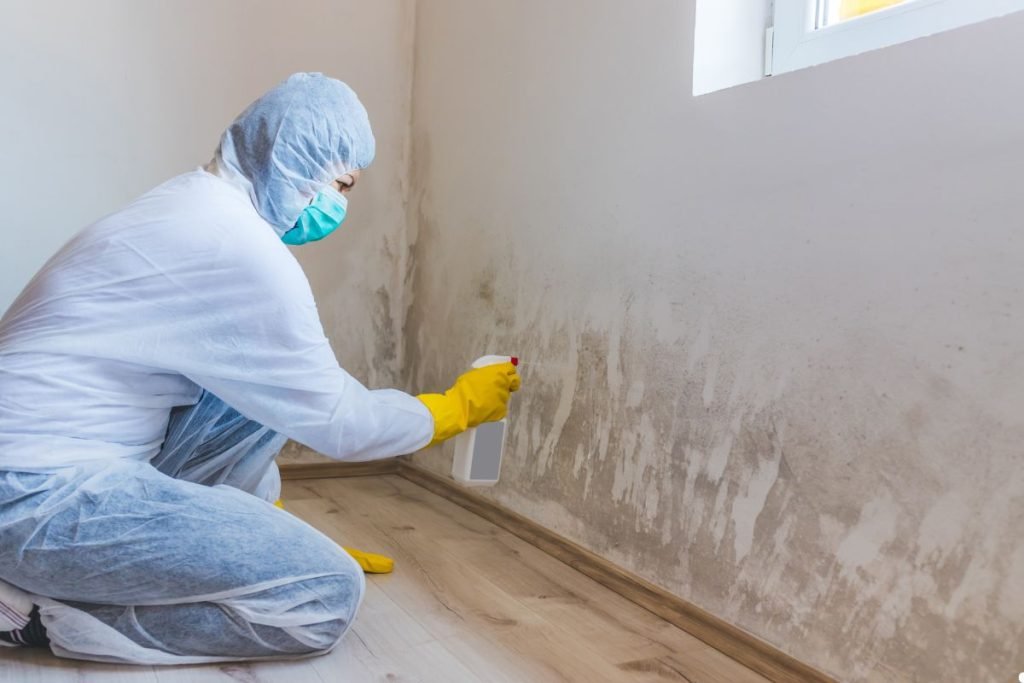
Mold is a ubiquitous presence, meaning it can and does grow almost anywhere – in your home, office, or even outdoors. It thrives on moisture and organic matter, making nearly every building vulnerable. Understanding where mold commonly grows, the factors that contribute to its growth, and the steps you can take to prevent it are crucial for protecting your health and property. If you suspect a significant mold problem,
Where Mold Thrives: Identifying Potential Hotspots

Mold needs moisture to survive, so it’s most often found in damp, humid environments. Here are some of the most common places where mold tends to thrive in a typical home:
- Bathrooms: With showers, bathtubs, and sinks, bathrooms are prime breeding grounds for mold. Look for mold growth on shower tiles, grout, around faucets, and even on shower curtains.
- Basements: Basements are often damp and poorly ventilated, making them susceptible to mold growth. Leaky foundations, condensation, and flooding can all contribute to the problem.
- Kitchens: Kitchens are another high-moisture area, with leaky pipes, spills, and condensation from cooking. Check under sinks, around dishwashers, and behind refrigerators.
- Laundry Rooms: Washing machines can leak, and dryers can create humidity, making laundry rooms a potential mold hotspot.
- Attics: Roof leaks and poor ventilation can create the perfect conditions for mold growth in attics. Interlink with attic mold removal services..
Hidden Mold: Where to Look Beyond the Obvious
Mold isn’t always visible on the surface. It can hide in less obvious places, making it harder to detect. Be sure to check these areas:
- Behind Walls: Leaky pipes or condensation inside walls can create a hidden mold problem. Look for water stains or discoloration on walls as a sign.
- Under Carpets: Spills and leaks can seep into carpets and create a breeding ground for mold.
- In HVAC Systems: Mold can grow in air ducts and vents, spreading spores throughout your home.
- Around Windows & Doors: Condensation around windows and doors can lead to mold growth.
The Mold Growth Recipe: Moisture, Food, and Time
Mold needs three things to grow:
- Moisture Sources: This is the most critical factor. Leaks, humidity, condensation, and flooding all provide the moisture mold needs to thrive.
- Food Sources: Mold feeds on organic materials like wood, drywall, paper, and fabric.
- Temperature & Time: Mold grows best in warm temperatures and can begin to grow within 24-48 hours of moisture exposure.
Protecting Your Health: Understanding the Risks of Mold
Mold exposure can cause a variety of health problems, especially for people with allergies, asthma, or weakened immune systems.
- Allergy Symptoms: Mold can trigger allergic reactions such as sneezing, runny nose, itchy eyes, and skin rashes.
- Respiratory Issues: Mold can irritate the lungs and airways, leading to coughing, wheezing, and difficulty breathing.
- Other Health Concerns: In some cases, mold exposure can lead to more serious health problems, such as infections or neurological problems.
Protecting your health from mold exposure is crucial. If you’re experiencing any of these symptoms and suspect mold in your home, call us for professional mold testing and remediation.
Keeping Mold at Bay: Practical Prevention Tips

Preventing mold growth is much easier and cheaper than dealing with a mold problem after it starts. Here are some practical tips:
- Control Humidity: Use dehumidifiers to keep indoor humidity below 60%.
- Fix Leaks Promptly: Repair any leaks in your roof, plumbing, or windows immediately.
- Improve Ventilation: Ensure adequate ventilation in bathrooms, kitchens, and laundry rooms.
- Regular Cleaning: Clean and dry damp areas regularly, especially bathrooms and kitchens.
- Use Mold-Resistant Products: Use mold-resistant paint and building materials in areas prone to moisture.
When DIY Isn’t Enough: Recognizing the Need for Professional Help
While some small mold problems can be handled with DIY methods, larger or more complex mold infestations require professional mold remediation. if you see these signs:
- Mold covers a large area (more than 10 square feet).
- Mold is growing in a hard-to-reach area, such as inside walls or in HVAC systems. Interlink with HVAC mold removal services.
- You have health concerns related to mold exposure.
- You’ve tried DIY methods, but the mold keeps coming back.
A professional mold remediation company will have the expertise, equipment, and training to safely and effectively remove mold and prevent it from returning.
Large, eye-catching button: “Need Professional Mold Remediation? Contact Us Today!
Answering Your Questions About Mold
Here are some frequently asked questions about mold:
What are the signs of mold?
Signs of mold include visible mold growth (often black, green, or white), musty odors, water stains, and allergy symptoms.
Is all mold dangerous?
Not all molds are equally dangerous. Some molds are relatively harmless, while others can produce toxins that can cause health problems. However, all mold should be removed promptly to prevent further growth and potential health risks.
How can I test for mold?
You can purchase DIY mold testing kits, but professional mold testing is more accurate and reliable. A professional mold inspector will take samples and send them to a lab for analysis to identify the type and concentration of mold present.
Taking Action Against Mold: Protecting Your Home and Health
Mold is a common problem, but it doesn’t have to be a threat to your home and health. By understanding where mold grows, the factors that contribute to its growth, and the steps you can take to prevent and remove it, you can protect your property and your well-being. If you suspect a mold problem, don’t hesitate to call us for professional assistance. We’re here to help you create a healthy and safe living environment.
